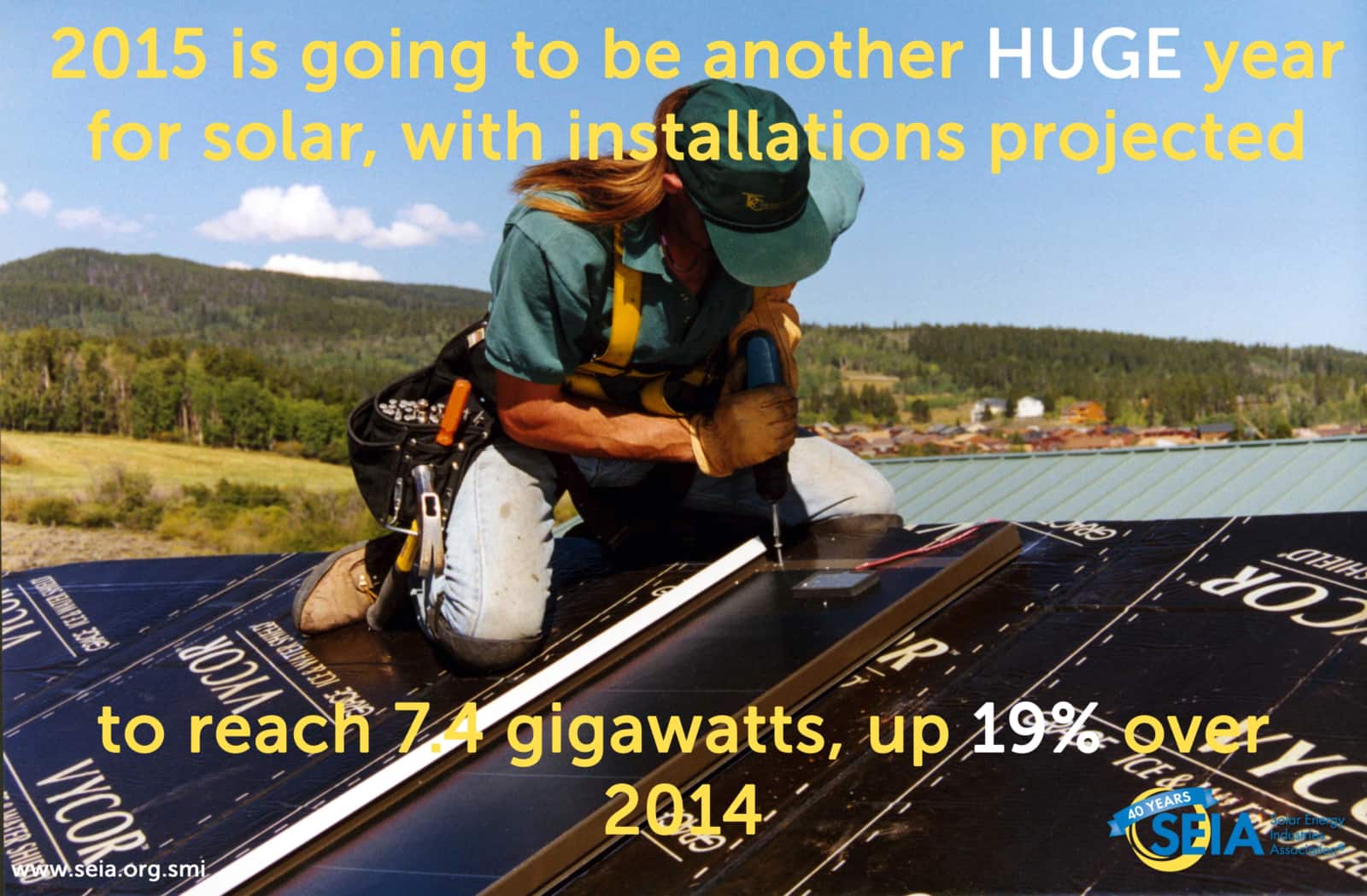New Solar System Activated Every 1.6 Minutes In Q3
Wednesday, Dec 09 2015
By
Justin Baca

The pace of solar energy expansion in America is catching speed, with a new solar system activated every 1.6 minutes in quarter three of 2015, up from every 2.5 minutes in 2014.
Throughout the first three quarters of this year, 30 percent of all new electric generating capacity brought on-line in the U.S. came from solar, according to a new report today from GTM Research and the Solar Energy Industries Association (SEIA).
The Q3 2015 edition of the U.S. Solar Market Insight Report revealed the U.S. solar industry installed 1,361 megawatts-DC (MWdc) of solar PV capacity from July to September, bringing total solar capacity nationwide to 22.4 gigawatts-DC (GWdc).
This new capacity came from more than 81,000 new PV systems that were connected to the grid in Q3:
- Utility-scale PV, which represented the lion’s share of all capacity at 42 percent, added 565 MWdc and developers have another 18.7 GWdc in the pipeline.
- Residential PV posted a new quarterly record total by installing 554 MWdc of capacity, a 12 percent increase quarter-over-quarter, and 69 percent year-over-year.
- Non-residential PV also posted 242 MWdc, up 19 percent over last quarter and 4 percent over the same quarter last year.
Though there was no concentrating solar power (CSP) brought on-line, the Crescent Dunes project in Tonopah, Nevada, is under construction and is expected to become fully operational by the end of 2016, adding an additional 110 MWac of capacity.
The results from Q3 indicate that solar is on pace to complete a record-breaking 7.4 GWdc this year. In fact, the fourth quarter is expected to be the largest quarter for solar PV installations in U.S. history.
New @SEIA @GTMResearch report shows 2015 shaping up to be US #solar's BEST YEAR EVER! Q4 to be record-breaking! https://t.co/xgxx4Y2uoS
— Solar Industry (@SEIA) December 9, 2015
By Dec. 31, the U.S. will have installed an additional 3 GWdc of solar energy. This is significant because solar will eclipse 1 percent of all electricity generation in the country for the first time and is likely on the way to much higher levels in the years ahead.
Article Type